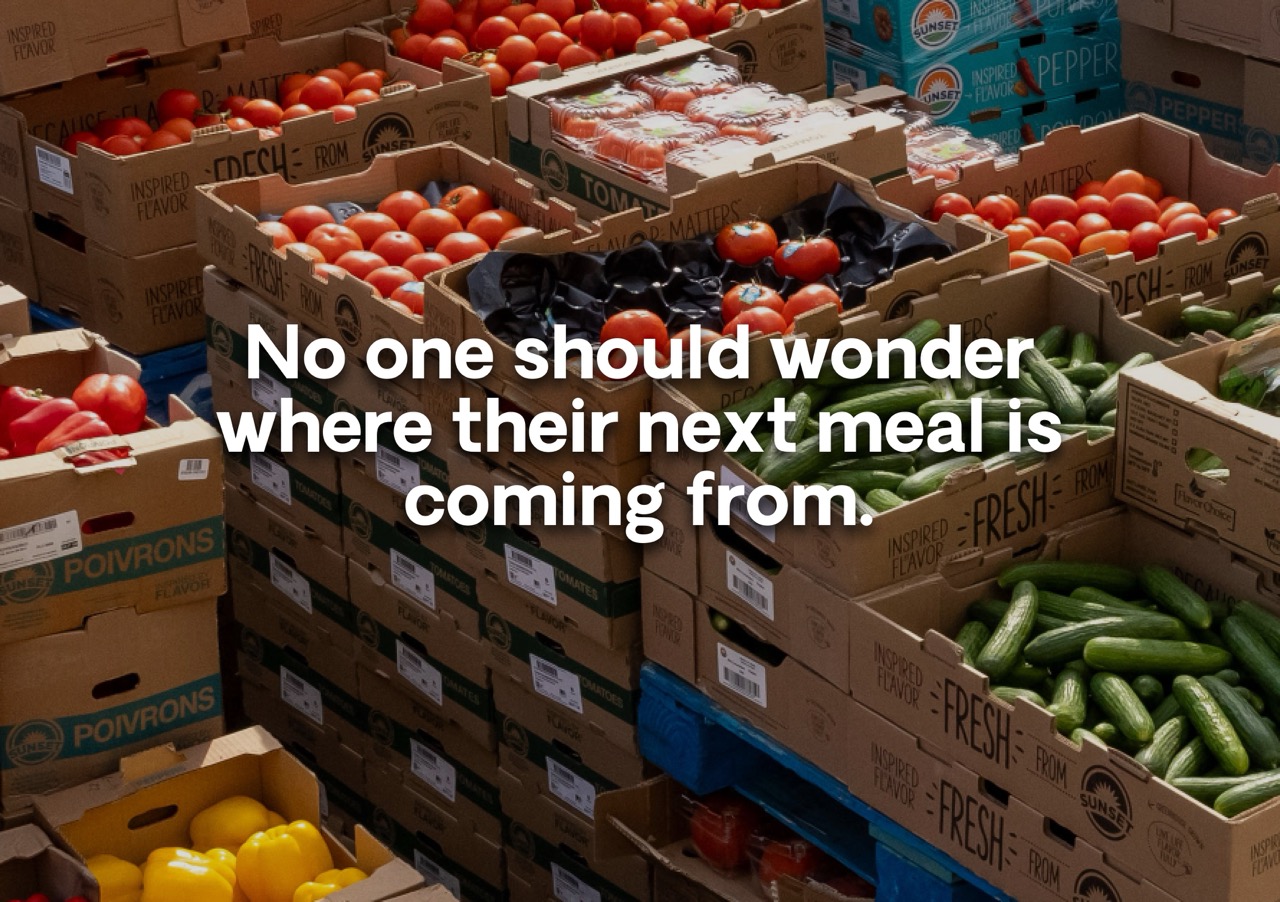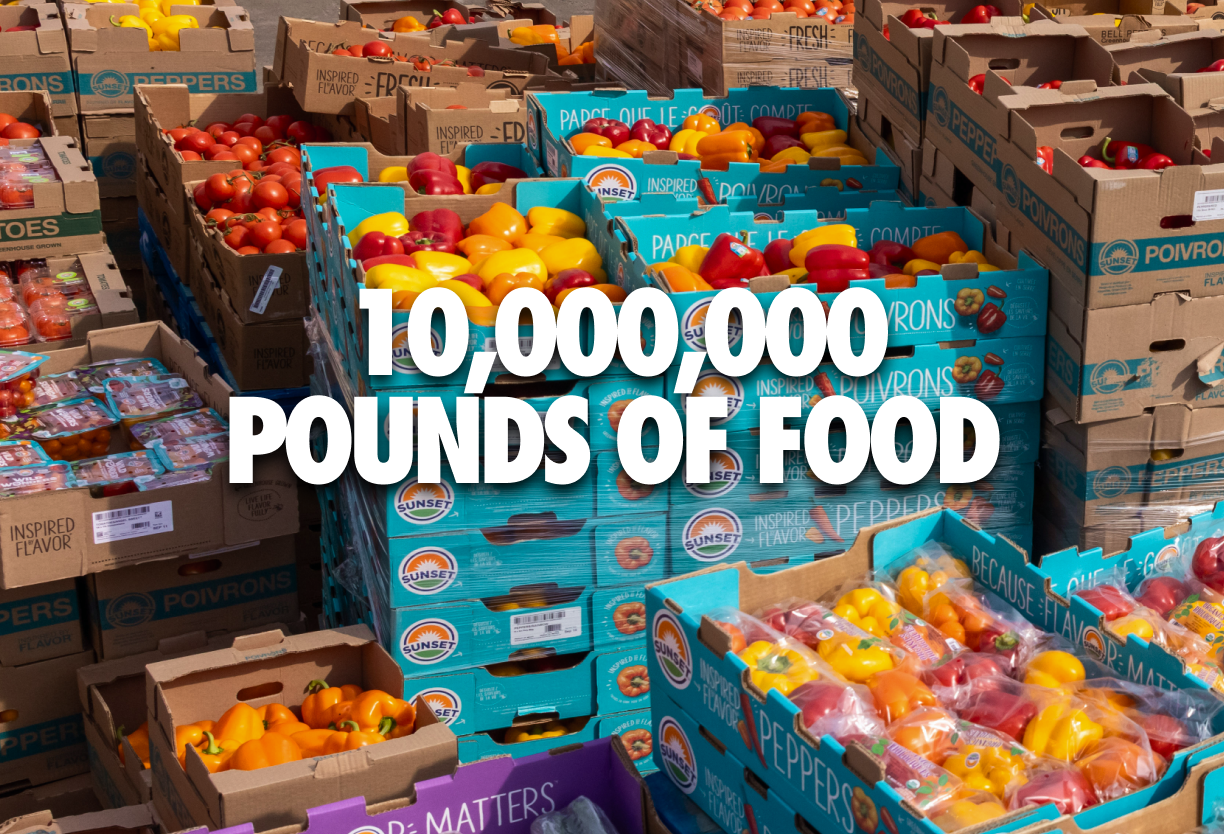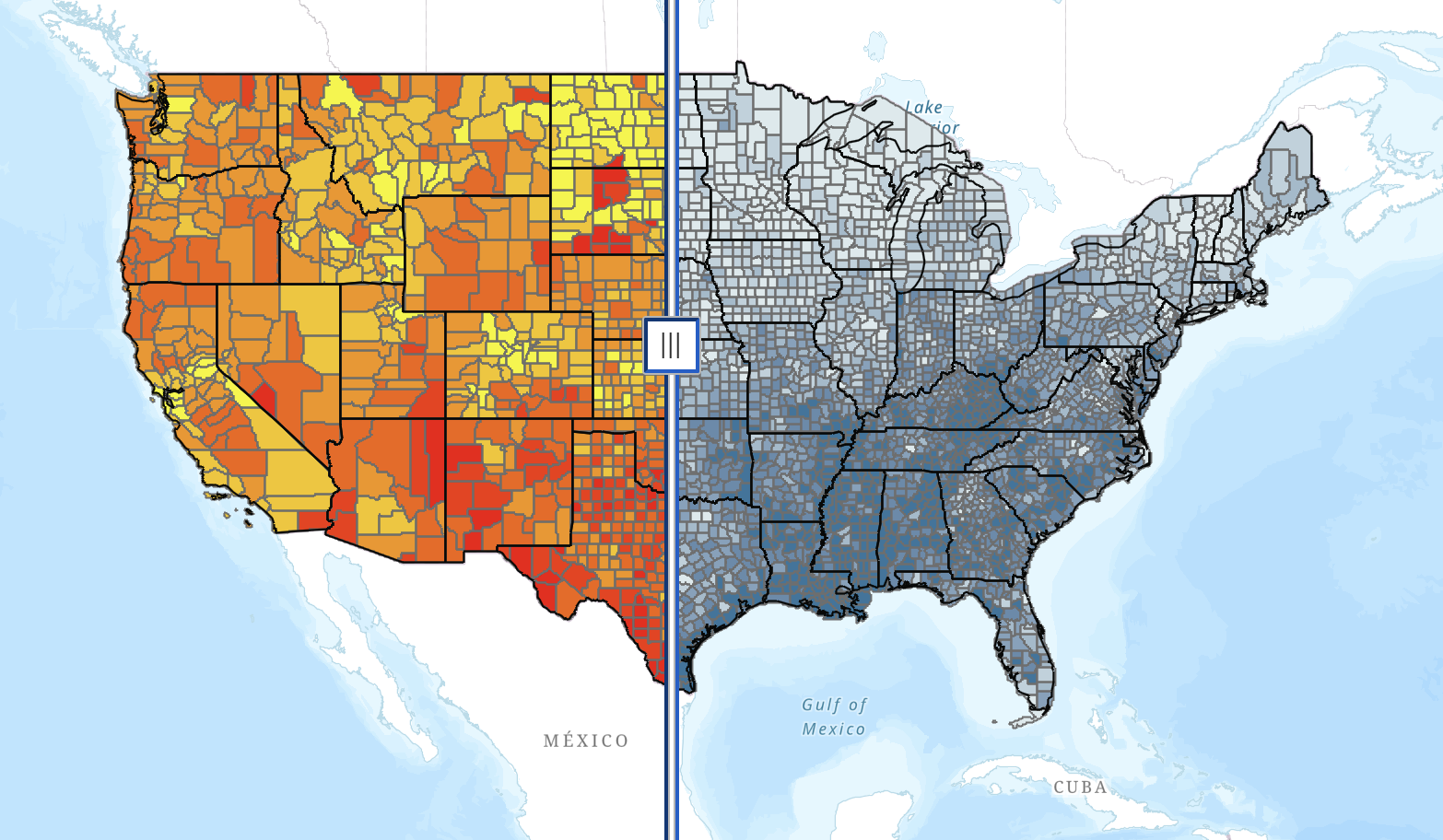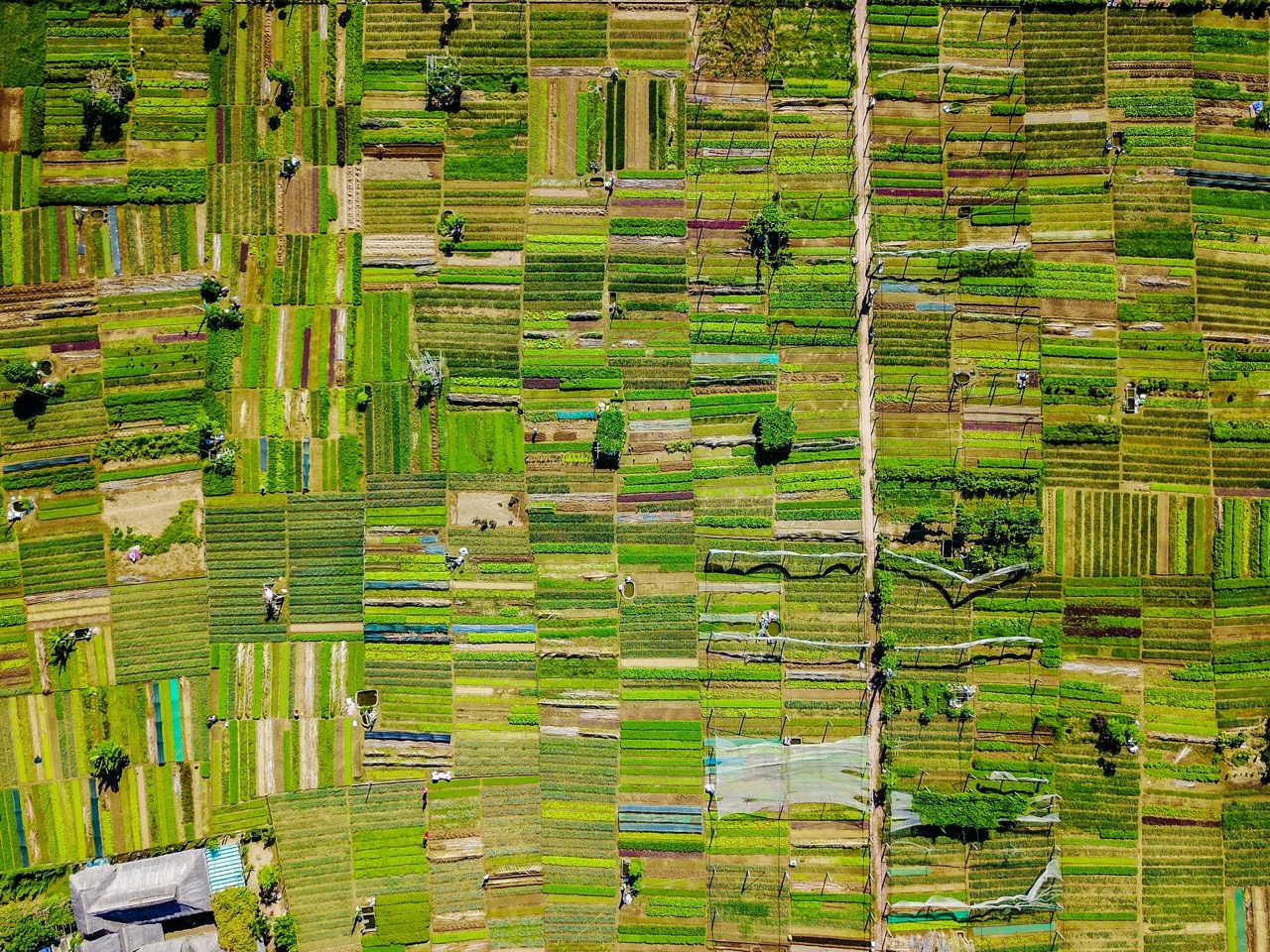On August 5th, The Farmlink Project and Eat REAL worked together to launch The Farmlink Project’s new initiative of “students helping students.” This is how Nora LaTorre, CEO of the public health nonprofit organization Eat REAL, described the concept of college students facilitating the delivery of fresh produce to K-12 schools. “Eat REAL partners with schools in order to bring more nutritious and sustainable food to students.” On August 5th, Eat REAL and The Farmlink Project partnered together to help deliver 20,160 pounds of fresh produce to nine school sites in the Mt. Diablo Unified School District in Contra Costa County, California from Amor Organics, a local farm in Watsonville, California. At the nine sites, there were outdoor drive-thrus where families picked up not only daily school meals but also a box of about 20 pounds of fresh produce. 1,008 boxes were distributed total, equating to 1,008 families served in the Mt. Diablo Unified School District! Six members of The Farmlink Project team attended the delivery: Caroline Spertus, Isabel Tran, Jessie Kaull, Kiki Couchman, Rani Zimand, and Sierra Fang-Horvath.
So, how did this new partnership between The Farmlink Project and Eat REAL begin? Georgia Gardner, a friend of both Eat REAL and The Farmlink Project, connected the two nonprofit organizations. The like-minded California based nonprofit Eat REAL partners with 2,501 schools nationally who serve over one million students between their COVID-19 relief program and their core program, according to Nora. The pandemic has dramatically expanded Eat REAL’s reach. Nora said that, “Eat REAL’s food service partners have never seen this level of need and, therefore, the program has grown exponentially to support more schools in order to serve families essential meals.” I was intrigued when Nora characterized schools as the “largest restaurant chain in America” and described how there is potential to lower rates of food insecurity by having widespread school food distributions:
“During COVID-19, with numerous new partnerships, schools are innovating and proving how they are critical real food access points for kids and their families. We must make structural changes to our food system with schools at the center of change and restoring our health.”
Nora emphasized how the organic produce delivered from Amor Organics was “beautiful,” “high-quality,” “fresh,” and “nutritious.” She also said school workers pointed out that this delivery consisted of the “most varied food boxes handed out” thus far. Some examples of the produce included in the boxes were stone fruits like peaches, cabbages, lettuce, squash, onions, and other types of vegetables. Nora, herself, attended the delivery in Bel Air and explained, “Every single family said yes to the box and they were so happy.” She also described how they were grateful to receive produce straight from the farm. Nora underlined how enthusiastic Eat REAL was to work with The Farmlink Project to “share and promote local agriculture, build more relationships with local farmers, and help more farmers and families.”
To provide more context about the communities being served across the nine school sites where deliveries occurred, Nora stated that the Mt. Diablo Unified School District has “high rates of free and reduced meals,” indicating that many students “depend on school meals and extra meals for nutrition.” Farmlinker Isabel Tran interviewed Dominic Machi, Director of Food and Nutrition Services for the Mt. Diablo Unified School District, while attending the delivery. He emphasized how the families in the area have struggled since the start of the pandemic and this has heavily affected students. When Isabel asked Dominic what this delivery meant for his community, he responded by saying:
“This is just really for our community special, because they know that they can count on their school in their area, and they can get food that they need...we know right now many of our families have been impacted by either job layoffs, furlows, whatever the case may be and just trying to make ends meet. So we are able to provide at least a week’s worth of groceries for a family of four especially with these produce boxes we are doing today.”
Nora and Dominic’s dedication to student’s health is inspiring. They are committed to making sure students know where their next meal will come from and that it is nutritious. As Dominic said, “Even if we are teaching kids online this fall, students still depend on school food service programs for essential meals. Education, school lunch, hunger, and health are interlinked. We’re doing all we can to help our students get healthy during COVID-19...” Another important health benefit Nora mentioned was how the World Health Organization (WHO) has encouraged people to “eat healthy food in order to boost their immune systems so they are better prepared to fight COVID-19.” She said, “This is an immediate benefit for students and their families but also eating healthy foods has the power to inspire them long term which could transform the health of the next generation.” The Farmlink Project is thrilled to be partnering with Eat REAL, working side by side to accomplish our complementary goals.
< Back
On August 5th, The Farmlink Project and Eat REAL worked together to launch The Farmlink Project’s new initiative of “students helping students.” This is how Nora LaTorre, CEO of the public health nonprofit organization Eat REAL, described the concept of college students facilitating the delivery of fresh produce to K-12 schools. “Eat REAL partners with schools in order to bring more nutritious and sustainable food to students.” On August 5th, Eat REAL and The Farmlink Project partnered together to help deliver 20,160 pounds of fresh produce to nine school sites in the Mt. Diablo Unified School District in Contra Costa County, California from Amor Organics, a local farm in Watsonville, California. At the nine sites, there were outdoor drive-thrus where families picked up not only daily school meals but also a box of about 20 pounds of fresh produce. 1,008 boxes were distributed total, equating to 1,008 families served in the Mt. Diablo Unified School District! Six members of The Farmlink Project team attended the delivery: Caroline Spertus, Isabel Tran, Jessie Kaull, Kiki Couchman, Rani Zimand, and Sierra Fang-Horvath.
So, how did this new partnership between The Farmlink Project and Eat REAL begin? Georgia Gardner, a friend of both Eat REAL and The Farmlink Project, connected the two nonprofit organizations. The like-minded California based nonprofit Eat REAL partners with 2,501 schools nationally who serve over one million students between their COVID-19 relief program and their core program, according to Nora. The pandemic has dramatically expanded Eat REAL’s reach. Nora said that, “Eat REAL’s food service partners have never seen this level of need and, therefore, the program has grown exponentially to support more schools in order to serve families essential meals.” I was intrigued when Nora characterized schools as the “largest restaurant chain in America” and described how there is potential to lower rates of food insecurity by having widespread school food distributions:
“During COVID-19, with numerous new partnerships, schools are innovating and proving how they are critical real food access points for kids and their families. We must make structural changes to our food system with schools at the center of change and restoring our health.”
Nora emphasized how the organic produce delivered from Amor Organics was “beautiful,” “high-quality,” “fresh,” and “nutritious.” She also said school workers pointed out that this delivery consisted of the “most varied food boxes handed out” thus far. Some examples of the produce included in the boxes were stone fruits like peaches, cabbages, lettuce, squash, onions, and other types of vegetables. Nora, herself, attended the delivery in Bel Air and explained, “Every single family said yes to the box and they were so happy.” She also described how they were grateful to receive produce straight from the farm. Nora underlined how enthusiastic Eat REAL was to work with The Farmlink Project to “share and promote local agriculture, build more relationships with local farmers, and help more farmers and families.”
To provide more context about the communities being served across the nine school sites where deliveries occurred, Nora stated that the Mt. Diablo Unified School District has “high rates of free and reduced meals,” indicating that many students “depend on school meals and extra meals for nutrition.” Farmlinker Isabel Tran interviewed Dominic Machi, Director of Food and Nutrition Services for the Mt. Diablo Unified School District, while attending the delivery. He emphasized how the families in the area have struggled since the start of the pandemic and this has heavily affected students. When Isabel asked Dominic what this delivery meant for his community, he responded by saying:
“This is just really for our community special, because they know that they can count on their school in their area, and they can get food that they need...we know right now many of our families have been impacted by either job layoffs, furlows, whatever the case may be and just trying to make ends meet. So we are able to provide at least a week’s worth of groceries for a family of four especially with these produce boxes we are doing today.”
Nora and Dominic’s dedication to student’s health is inspiring. They are committed to making sure students know where their next meal will come from and that it is nutritious. As Dominic said, “Even if we are teaching kids online this fall, students still depend on school food service programs for essential meals. Education, school lunch, hunger, and health are interlinked. We’re doing all we can to help our students get healthy during COVID-19...” Another important health benefit Nora mentioned was how the World Health Organization (WHO) has encouraged people to “eat healthy food in order to boost their immune systems so they are better prepared to fight COVID-19.” She said, “This is an immediate benefit for students and their families but also eating healthy foods has the power to inspire them long term which could transform the health of the next generation.” The Farmlink Project is thrilled to be partnering with Eat REAL, working side by side to accomplish our complementary goals.
The Farmlink Project's First School Delivery!
Watsonville, CA, to Contra Costa County, CA
On August 5th, The Farmlink Project and Eat REAL worked together to launch The Farmlink Project’s new initiative of “students helping students.” This is how Nora LaTorre, CEO of the public health nonprofit organization Eat REAL, described the concept of college students facilitating the delivery of fresh produce to K-12 schools. “Eat REAL partners with schools in order to bring more nutritious and sustainable food to students.” On August 5th, Eat REAL and The Farmlink Project partnered together to help deliver 20,160 pounds of fresh produce to nine school sites in the Mt. Diablo Unified School District in Contra Costa County, California from Amor Organics, a local farm in Watsonville, California. At the nine sites, there were outdoor drive-thrus where families picked up not only daily school meals but also a box of about 20 pounds of fresh produce. 1,008 boxes were distributed total, equating to 1,008 families served in the Mt. Diablo Unified School District! Six members of The Farmlink Project team attended the delivery: Caroline Spertus, Isabel Tran, Jessie Kaull, Kiki Couchman, Rani Zimand, and Sierra Fang-Horvath.
So, how did this new partnership between The Farmlink Project and Eat REAL begin? Georgia Gardner, a friend of both Eat REAL and The Farmlink Project, connected the two nonprofit organizations. The like-minded California based nonprofit Eat REAL partners with 2,501 schools nationally who serve over one million students between their COVID-19 relief program and their core program, according to Nora. The pandemic has dramatically expanded Eat REAL’s reach. Nora said that, “Eat REAL’s food service partners have never seen this level of need and, therefore, the program has grown exponentially to support more schools in order to serve families essential meals.” I was intrigued when Nora characterized schools as the “largest restaurant chain in America” and described how there is potential to lower rates of food insecurity by having widespread school food distributions:
“During COVID-19, with numerous new partnerships, schools are innovating and proving how they are critical real food access points for kids and their families. We must make structural changes to our food system with schools at the center of change and restoring our health.”
Nora emphasized how the organic produce delivered from Amor Organics was “beautiful,” “high-quality,” “fresh,” and “nutritious.” She also said school workers pointed out that this delivery consisted of the “most varied food boxes handed out” thus far. Some examples of the produce included in the boxes were stone fruits like peaches, cabbages, lettuce, squash, onions, and other types of vegetables. Nora, herself, attended the delivery in Bel Air and explained, “Every single family said yes to the box and they were so happy.” She also described how they were grateful to receive produce straight from the farm. Nora underlined how enthusiastic Eat REAL was to work with The Farmlink Project to “share and promote local agriculture, build more relationships with local farmers, and help more farmers and families.”
To provide more context about the communities being served across the nine school sites where deliveries occurred, Nora stated that the Mt. Diablo Unified School District has “high rates of free and reduced meals,” indicating that many students “depend on school meals and extra meals for nutrition.” Farmlinker Isabel Tran interviewed Dominic Machi, Director of Food and Nutrition Services for the Mt. Diablo Unified School District, while attending the delivery. He emphasized how the families in the area have struggled since the start of the pandemic and this has heavily affected students. When Isabel asked Dominic what this delivery meant for his community, he responded by saying:
“This is just really for our community special, because they know that they can count on their school in their area, and they can get food that they need...we know right now many of our families have been impacted by either job layoffs, furlows, whatever the case may be and just trying to make ends meet. So we are able to provide at least a week’s worth of groceries for a family of four especially with these produce boxes we are doing today.”
Nora and Dominic’s dedication to student’s health is inspiring. They are committed to making sure students know where their next meal will come from and that it is nutritious. As Dominic said, “Even if we are teaching kids online this fall, students still depend on school food service programs for essential meals. Education, school lunch, hunger, and health are interlinked. We’re doing all we can to help our students get healthy during COVID-19...” Another important health benefit Nora mentioned was how the World Health Organization (WHO) has encouraged people to “eat healthy food in order to boost their immune systems so they are better prepared to fight COVID-19.” She said, “This is an immediate benefit for students and their families but also eating healthy foods has the power to inspire them long term which could transform the health of the next generation.” The Farmlink Project is thrilled to be partnering with Eat REAL, working side by side to accomplish our complementary goals.
.png)








.svg)
.svg)
.svg)